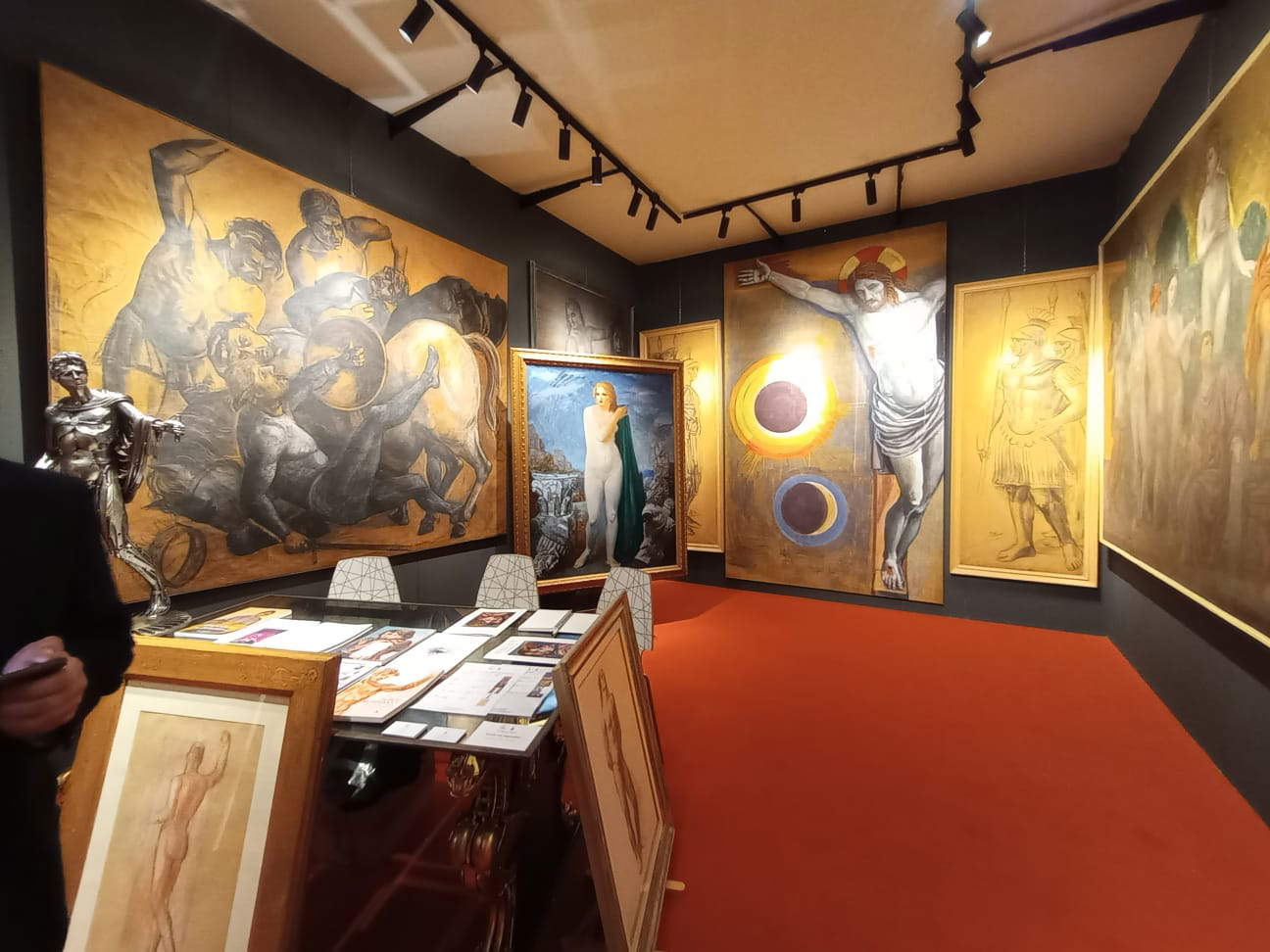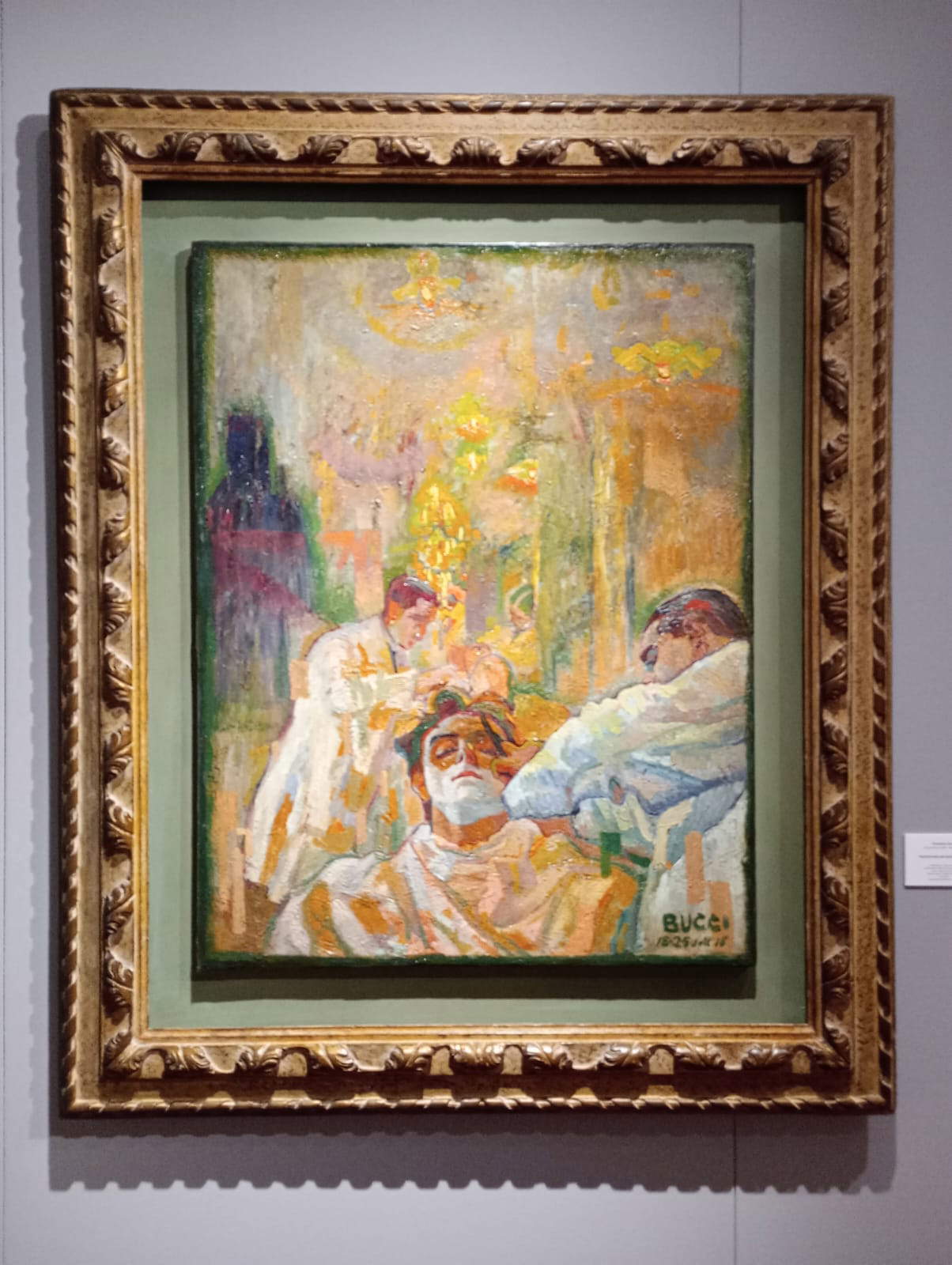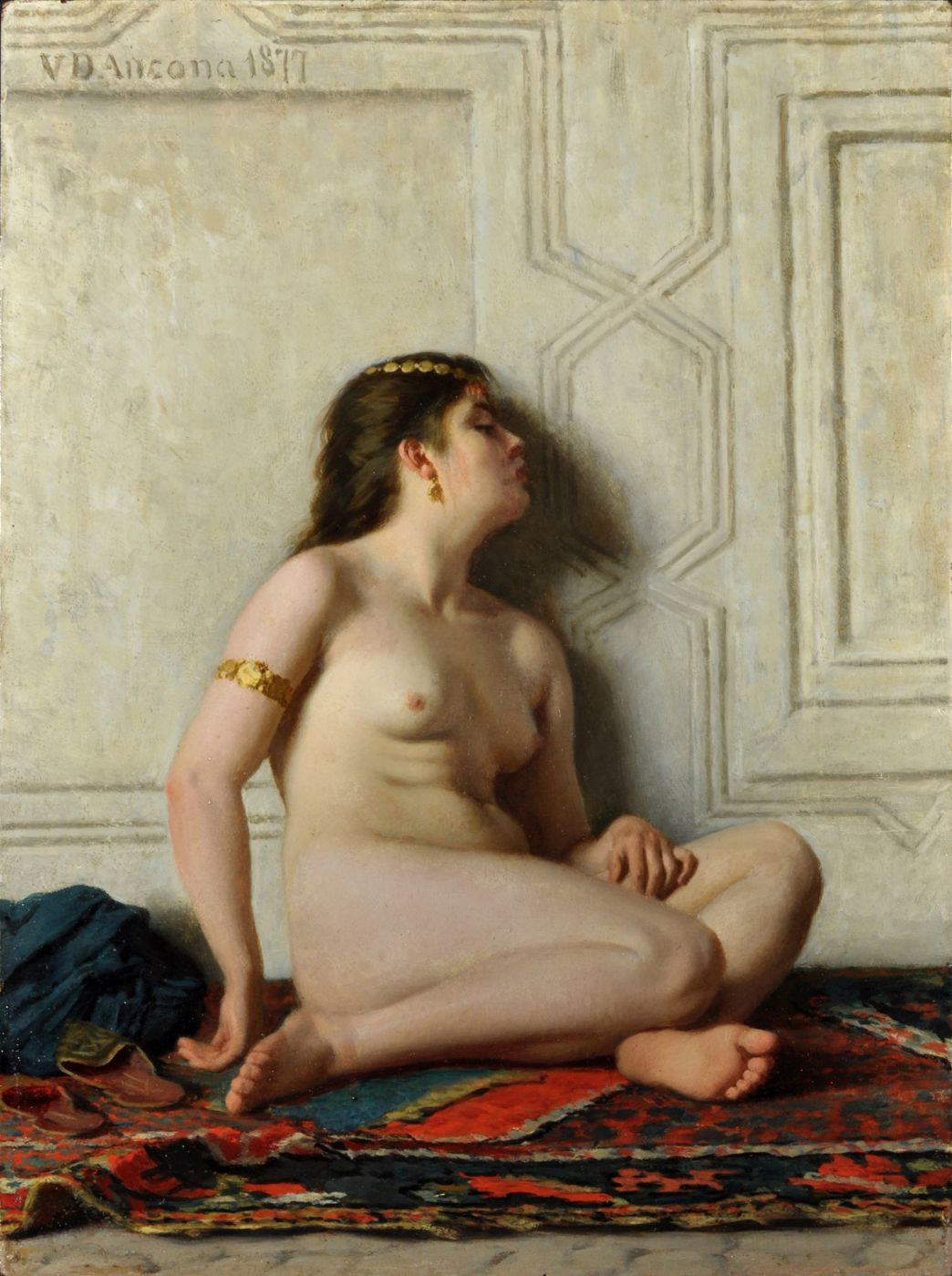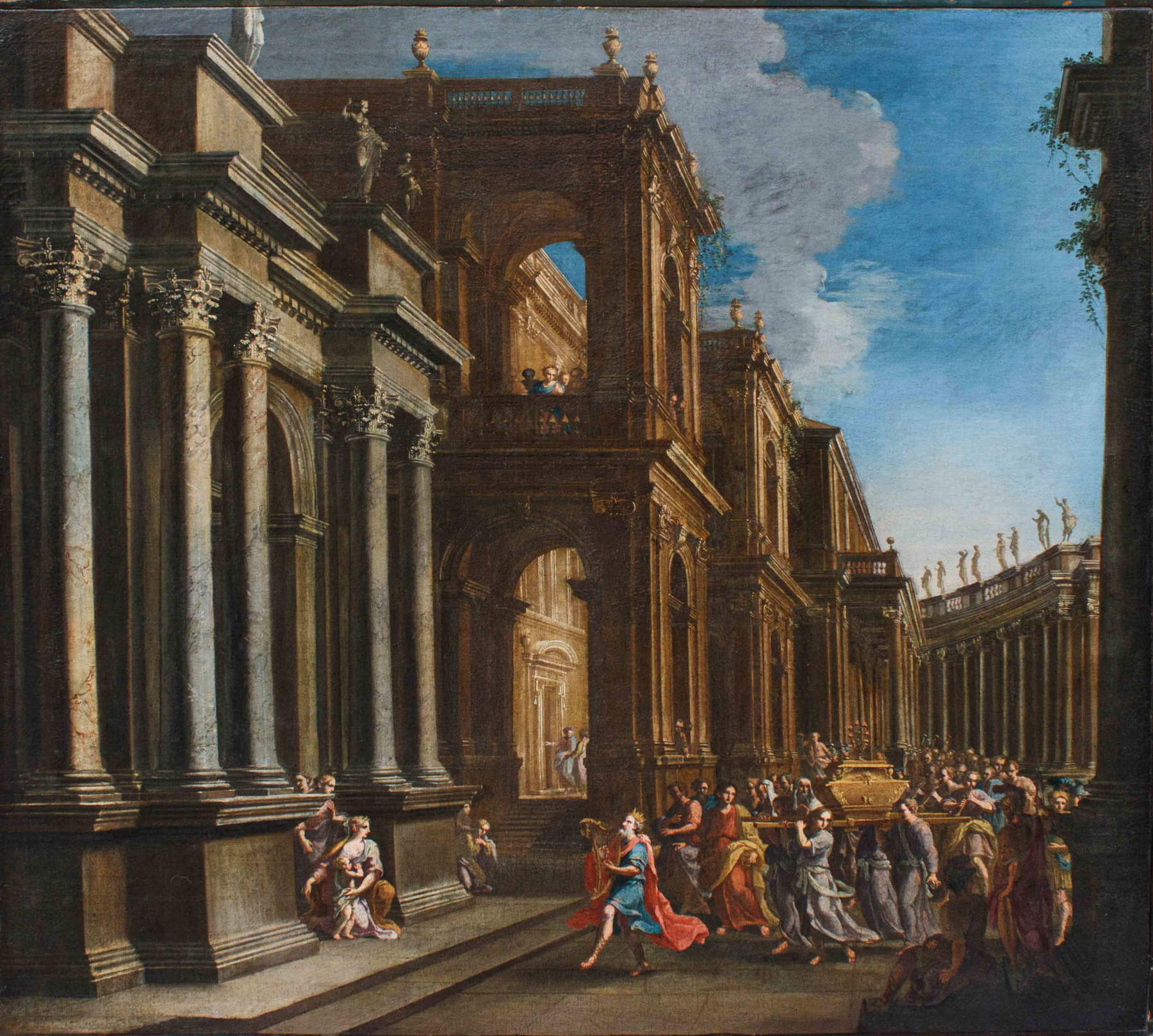A fifth edition of Amart is truly top-notch. The Milan antiques fair-market, held this year at the Museo della Permanente from Nov. 8 to 12, aims to become a landmark event for enthusiasts and collectors from Italy and beyond, who at the exhibition organized by theAssociazione Antiquari Milanesi have a chance to see, this year, the proposal of as many as 64 exhibitors characterized by a great variety: they range from gold backgrounds to the great Italian 19th century, from oriental art to African art, from 20th century to Renaissance art, from jewelry to prints, rare books and carpets. Established in 2018 and growing rapidly, Amart this year boasts a quality selection, with works covering all price ranges.
The tour among the booths begins at Antichità Nobili , which, the first exhibitor one encounters on the way up the Permanente staircase, is presented with a beautiful Allegory of Charity by Sebastiano Ricci, a work that is influenced by the suggestions of Annibale Carracci, whose sense of classicism and harmonious charm can be captured in thiswork, particularly in the gentle expressions of the figures and the sensitive use of light, while the rich brushwork, particularly evident in the well-preserved reflections on the white drapery and flesh tones, is typical of Ricci’s spontaneous, painterly style, which paved the way for the great Venetian artists of the 18th century. Not far away is the booth of the Genoese Capozzi , which presents a bust of Doge Giovanni Antonio Giustiniani attributed to Domenico Parodi, one of the great names in Ligurian Baroque sculpture, a quality work that depicts the doge with a bias cut, animated wig and stern gaze, all details that contribute to a decidedly effective image. The nearby Mainetti Art Gallery , on the other hand, is presented with a singular Self-Portrait from the Barber by Anselmo Bucci, a work from 1916, while worth seeing, in the nearby booth of the Spoleto-based Umbria Artis, is a fine gilded and embossed copper astylar cross by a goldsmith from Sulmona from the early 13th century. Next door, from Mattarte is presented what is defined by an expert opinion of art historian Riccardo Lattuada as “an exceptional discovery about the early activity of Salvator Rosa,” namely a Martyrdom of St. Lawrence (45.000 €) executed by the Neapolitan painter in his early days, which shows “with the violence of the sign, the savory taste of painting studied in the workshop of Aniello Falcone, with obvious references to the taste of Battistello Caracciolo and Belisario Corenzio and then in contact with his friend Domenico Gargiulo known as Micco Spadaro and the German Johan Heinrich Schoenfeld.”

 The stand of
The stand of
Next comes a host of animal paintings: a lion and a fox with cubs at the Lucas booth, and Jules Gustave Leroy’s cats from RV Art Gallery Studio. Studiolo Fine Art ’s booth is peculiar, with some gems between the 19th and 20th centuries: the two odalisques by Vito d’Ancona, exemplifying the taste for exoticism of the time (the two paintings date from 1877 and 1874), and Vindizio Nodari Pesenti’s large bronze gymnast from 1939, exhibited at the Venice Biennale the following year. Nordic art at the Caiati stand with the singular Temptations of St. Anthony by the 17th-century Flemish artist Mattheus van Helmont (€80,000) and a tiny but exquisite 19th-century Still Life with Helmet by Hippolyte Pierre Delanoy (8.000 €), while Ars Antiqua evokes Caravaggesque art with a Coronation of Thorns that Massimo Pulini assigned to Bartolomeo Mendozzi, and ranges from the 16th century (with a delicate Penitent Magdalene by Giovanni Battista Castello) to the 18th century: not to be missed is King David and the Ark of the Covenant at the Temple of Jerusalem , which “reveals the evident brushwork of Alberto Carlieri,” as the data sheet compiled by Alberto Crispo puts it. A heterogeneous proposal at Tornabuoni Arte’s stand, ranging from gold backgrounds (a Madonna and Child between Saints James the Elder, Paul, John the Baptist and Catherine of Alexandria by Ventura di Moro) to the twentieth century (a Still Life by Giorgio Morandi) via the Renaissance (a Madonna and Child by Giovanni di Niccolò Mansueti identified by scholar Matteo Vinco, for a find that was confirmed by a black-and-white reproduction in the photo library of Federico Zeri, who is credited with attributing the work to Mansueti). Vinco, who in his exhaustive study places the execution of this panel between 1510 and 1515, notes how the “Child Jesus unbalanced on one side and in the act of blessing” represents “a solution frequently adopted by Giovanni Mansueti,” as does the “seated Madonna, with her legs and bust turned generally to the left and her hand supporting the foot of the Child Jesus.” Also characteristic is the “regular and uniform crazing” of the white lead, “probably due to the composition of the pigment,” found by the scholar in other works by the artist, such as Mansueti’s own Madonna and Child, St. John and St. Benedict, formerly in the Berenson collection in Florence. Likewise peculiar to the Venetian author is the marked underlying drawing that has re-emerged into view with the passage of centuries, particularly evident “at the height of the left hand of the Madonna and the left foot of the Child Jesus” and “probably to be ascribed to the use of a cartoon.”












Descending to the ground floor, where the other exhibitors are, one first encounters a large canvas, Version of Chuck 12, by Julian Schnabel: this is how Gian Enzo Sperone introduces himself to the public, who brings this striking 2003 work to the exhibition. Art Studio Pedrazzini brings to Amart a fine selection of works by the nineteenth-century Giorgio Belloni, whose general catalog the Milanese gallery has begun to edit, while entirely dedicated to Achille Funi is the stand of Laocoon Gallery - W. Apolloni: on display are easel works, drawings, studies for frescoes. There is also the large Parnassus nearly five meters wide (150.000 €), one of Funi’s most famous postwar achievements, intended to rival the counterparts by Mengs at Villa Albani in Rome and by Appiani at Villa Reale in Milan (the work was, moreover, kept by the artist until his death: he kept it in the classroom at the Brera Academy where he taught fresco technique, after which it passed to gallery owner Luigi Colombo, Funi’s executor, then ended up in a private collection and was recently discovered). Enrico ’s galleries offer a fine selection of 19th-century art, including a Portrait of a Lady with a Glove by Giovanni Boldini and Telemaco Signorini’s famous Rio a Riomaggiore , one of the most interesting works at the fair, while at the nearby Brun Fine Art booth stands out anotheranother important work, Pier Francesco Foschi’s Portrait of Bartolomeo Compagni , and great interest also for a specimen of Melancolia I, Albrecht Dürer’s famous 1514 burin brought to Amart by Salamon Fine Art: “It is,” Lorenza Salamon explains, “a coeval proof, Meder a, with a resounding provenance: Mariette” (110.000 €). Giamblanco of Turin presents a Martyrdom of St. Andrew that Tommaso Borgogelli assigned to the rare Genoese Pasquale Chiesa, as well as a Conversion of the Magdalene by Giovanni Francesco Guerrieri soon to be published in the monograph of theartist, and again the Reggio Emilia-based Phidias is proposing, in addition to a number of Ligabue’s plates, including Cavalli imbizzarriti sotto il temporale, a large painting with a Dante theme by Cesare Saccaggi, Incipit Vita Nova, which curiously returns to the same place, the Permanente headquarters, where it was first shown, in 1903. “Very few and extremely symbolic,” writes scholar Elena Lago, "are the temporal and spatial references that Dante provides us with in the Vita nova, and Saccaggi seems to want to go along with this poetic device, placing the’image of the two young people in a magical indefinite moment of adolescence, in the precious moment of inner change inherent in theIncipit vita nova, an expression reproduced on top of the elaborate gilded frame. Beatrice is clothed in both red and white, in an imaginary version of the dress, combining the two Dantean visions of the first and second encounters. Imaginary is also the scene. In no passage of the Vita nova, in fact, does Dante describe a moment in which they walk together: the most contact that occurs between the two is eye contact, followed by the virtuous and very pure exchange of greetings; for the rest, everything appears rather vague and allegorically undefined, with the clear intention of wanting to evoke an exciting contemplative conversation."
Spectacular gold backgrounds at the Altomani & S ons booth (anticipated by one of Antonio Campi’s most famous paintings, his San Girolamo signed and dated 1563, the subject of a publication by Marco Tanzi dating back to 2008): standing out in particular are a rare wall frame depicting St. Catherine of Alexandria, by Sano di Pietro, and a predella compartment by Spinello Aretino, an Adoration of the Magi probably painted during Spinello’s stay in Pisa, where the artist went after 1391 (originally part in good probability of a triptych that had a Madonna and Child as its central panel). Nearby, Dys44 Lampronti Gallery presents a very similar selection to the one brought to Turin the week before by Flashback: the Milanese public also thus gets to see the €8.5 million Canaletto(The Arrival of French Ambassador Jacques-Vincent Languet, Count of Gergy, at the Doge’s Palace on November 5, 1726) measuring six feet high by more than two and a half feet wide, presented in 2019 at Modenantiquaria with attribution to Luca Carlevarijs, although already past date to Canaletto. Compared to Flashback, however, there is also a fine work by Elisabetta Sirani, a Berenice cutting her hair that was featured in the exhibition on women in art held in 2022 in Brescia at Palazzo Martinengo. Another of the “stars” of this edition of Amart is at the Callea Antichità booth: it is the Madonna and Child by Domenico del Ghirlandaio (840.000), recently displayed at the great Perugino exhibition at the National Gallery of Umbria, and which figures opposite Garofalo’s Madonna Ryerson (€180,000), a splendid work from around 1500-1502, notified exactly like Ghirlandaio’s. On display at the Top Time stand is an exceptional French table clock, with two dials, from the Louis XVI era, with astronomical complications, called “à la Geometrie,” and depicting two figures in burnished bronze, on the right an allegory of Geometry holding in her own hands a goniometer and a table on which is shown the mathematical formula of optimization between the “fusée” and the movement of the spring inside the barrel, calculated in 1702 by mathematician Pierre de Varignion and installed in the movement of the watch proposed by the gallery: an object of great rarity displayed on a base of griotte red marble and gilded bronze.
Excellent gold backgrounds also at the Cannucciari Gallery, particularly a Madonna and Child with Saints by the Master of Montefloscoli, presented next to a fine Portrait of a Gentleman with Child by Santi di Tito. In contrast, the Orsini Arte e Libri gallery presents an Ila abducted by the nymphs by Pelagio Palagi, a recent addition to the corpus of the great Bolognese painter, believed to be a significant work of his early maturity. Finale with a sumptuous wall of small-format works by Livorno Divisionist Benvenuto Benvenuti, offered by the Livorno-based 800/900 Artstudio.














On the sidelines of the opening day, the President of the Milan Antiquarian Association, Michele Subert, highlighted “the great commitment of the exhibitors in finding and presenting at AMART works that are new to the market, sometimes even unpublished, up to and including new attributions of works. It is surprising how many works from private collections, many of them illustrious, are present this year.”
This edition’s prizes have also already been awarded. In fact, since its first edition, AMART has established an award(Best Exhibition Design Award) reserved for the three best stand installations, which is being awarded this year by a jury composed of interior designer Clara Bona, young and established curator and art blogger Maria Vittoria Baravelli, architect specializing in museography, Michele Piva, and art historian Stefano Zuffi. The Jury named the winners for the current edition indicating the reasons as follows: Booth 46. In Opera Italian Arts, Milan (“Lights, graphics, colors and tones of the different materials of the exhibited works compose an elegantly balanced and coherent atmosphere.”); Stand 31. Salamon Fine Art, Milan (“Works from different eras, sizes, techniques and materials are enhanced by a careful set-up, with brave and successful solutions such as the frames for the engravings.”); Stand 44. Dalton Somarè, Milan (“The effective choice of lights and plinths highlights highly suggestive sculptures, in a rhythmic dialogue across eras and continents.”).
Warning: the translation into English of the original Italian article was created using automatic tools. We undertake to review all articles, but we do not guarantee the total absence of inaccuracies in the translation due to the program. You can find the original by clicking on the ITA button. If you find any mistake,please contact us.